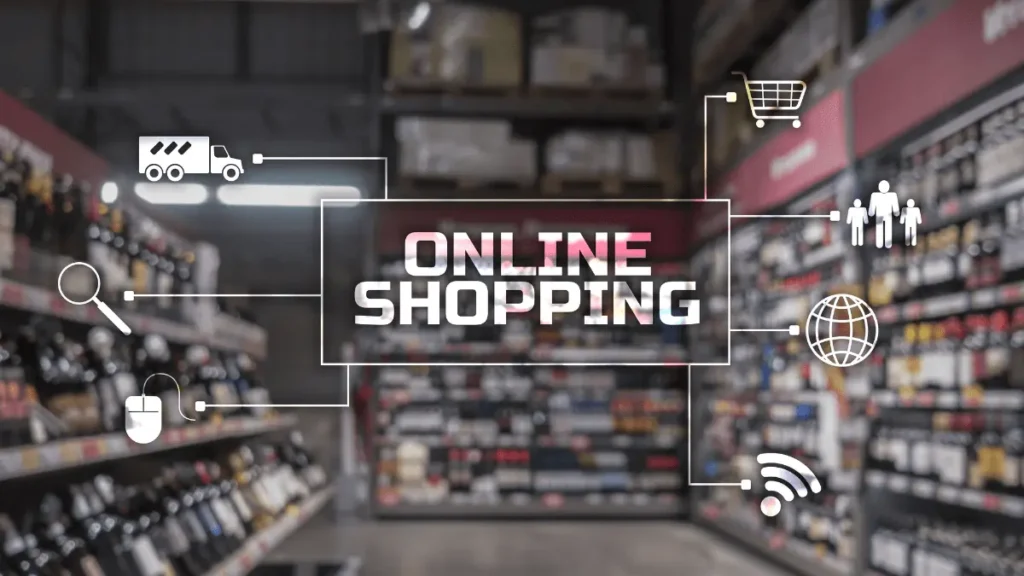E-Commerce in India: E-commerce has totally revolutionized the landscape for retailing. While better Internet penetration and decreasing prices in mobile handsets are making the big cities less exclusive to e-commerce sites, there is still such an acceleration in the growth of ecommerce that calls for concern and attention on the issues that arise for brands and marketers. From being a reason for trust to sustainability, proliferation of ecommerce in India brings problems unique unto themselves.
The Rise of E-Commerce Giants in India
Indian e-commerce has been rising for the last couple of years. In 2023, the e-commerce market stands at about $70 billion and will touch $300 billion by the year 2030. Not just among the urban consumers but also among the rural ones.
With such expansion in markets from urban to rural, brands like Amazon, Flipkart, Zepto, and Blinkit get an extremely diverse customer base. Indeed, improved logistics and affordable technology made e-shopping accessible to remote places; however, growth itself incites more competition, forcing smaller brands to find unique ways to attract those customers and remain profitable.
The e-commerce will seriously affect the brick and mortar retailers since they have large supply chains. The e-commerce will offer the products at much lower prices with much faster delivery. Brick-and-mortar stores have to find ways by making relevant strategies, such as integrating into online channels through adopting an omnichannel approach in retaining customers.

Branding and Marketing in the Digital Age
E-commerce in India has changed the branding and marketing approach. In a developing economy like India, traditional methods of branding have been substituted by digital branding, targeting easy, seamless, and customer-centric experiences. Brands today focus on user-friendly platforms and personalized recommendations to increase customer satisfaction.
Personalization is extremely important in building these customer connections. Using AI and data analytics, brands provide personalized recommendations to improve the user experience. This keeps them distinctive in a highly competitive market from which scores of players are trying to capture attention through their offerings.
Another key focus is speed. Amazon and Flipkart are leaders in ensuring faster deliveries, but this is one area that Zepto and Blinkit are surpassing. Amidst the rapid pace at which the market operates, speed in service has become a power branding tool.
Brand differentiation becomes very challenging because of crowding in the marketplace. Most of the websites employ cheaping and promotions as a competitive strategy. However, constant offers depute the value of the brand, and make it difficult for new entrants to compete.
Balance of local and global appeal. Brands tailor content to fit regional appeal by supporting local languages and culturally relevant offerings. This would allow the brand to connect well with various Indian audiences while maintaining its broader appeal.
Building Consumer Trust and Loyalty
An issue for E-Commerce in India is building trust since the person cannot have face-to-face interaction since the interface is online, and some shoppers are not quite sure. New Indian e-commerce users worry about the quality of a product, payment security, and returns.
To build a customer trust framework, Amazon Prime and Flipkart Plus have introduced loyal programs. In such a highly competitive landscape, there is a foundation for customer retention in repeat purchase and reliability in shopping, and thus, building trust will remain one of the top priorities of E-Commerce for India while expanding.
Digital Advertising and Ethical Concerns
Digital advertising has become the primary marketing tool in E-Commerce in India. Brands allocate larger budgets to online ads, leveraging digital platforms to reach their audiences effectively.
Data analytics can now enable highly targeted advertisements that brands can leverage in connecting with consumers in a very personalized way. Improved advertising relevance, however, does have privacy concerns associated with it because most customers are uncomfortable with the amount of personal data retailers collect without further communication regarding its usage.
On the other hand, increased and targeted advert exposure may lead to ad fatigue in which consumers are saturated with the number of adverts. Batching advertisement frequency and quality equalizes both to keep users engaged without frustrating them.
Sustainability and Environmental Concerns
The rise of E-Commerce in India should be seen for their environmental impacts. The increasing demand for speed in delivery results in more production of packaging waste and transportation-related carbon footprint. As consumers grow increasingly conscientious about the environment, the latter begin to expect environmental sustainability practices from brands.
Many such companies are taking such calls seriously by reducing packaging waste and creating the most efficient routes possible that lessen carbon emissions. Companies are also taking alternative measures to render their packaging eco-friendly. In such a scenario, it is essential for brands to move on the sustainable track in their operations.
The Role of Omnichannel Marketing
An omnichannel approach has also been effective in improving the shopping experience. Click-and-collect services by Tata Cliq and Reliance Trends enable customers to pick their online orders from a retail outlet close to them. Thus, the service harnesses the benefits of “tangibility” from an in-store experience and the convenience of an online purchase.
As E-Commerce expands in India, it is one that will finally help brands meet very diverse consumer expectations. This can seamlessly work with online-offline channels, providing flexibility to digital-savvy and old-school shoppers alike, at a time when the need for this advantage is most palpable in a diverse market like India’s.

Striking a Balance for Sustainable Growth
The only slowdown that is expected for E-Commerce growth in India is at a point ahead where the growth needs to be balanced by implementing ethical practices on the part of brands. As speed and personalization become the mantra for consumers, companies have to fulfill expectations with environmental and ethics-sensitive practices on the horizon.
Brand trust, sustainable practices, and responsible advertisement would determine the survival of companies in the long run. Success and failure in such a competitive market would be determined by transparency, customer satisfaction, and environmental responsibility. Brands must grow with sustainability; otherwise, only a few would survive in such a rapidly changing digital world.
Conclusion
Current e-commerce expansion in India is balancing the retail market: providing new opportunities to reach customers for brands. Challenges still prevail in terms of trust, sustainability, and ethical marketing of products. Customer experience through innovative strategies needs to include transparency and environmental responsibility so that brands succeed in this strongly competitive endeavor.
A fast-emerging domain, E-commerce will evolve with the best brands in position for long-term success, balancing growth with sustainability. How E-Commerce in India will play out in the future will depend on responsible and thoughtful growth strategies by old and new entrants in this market.











